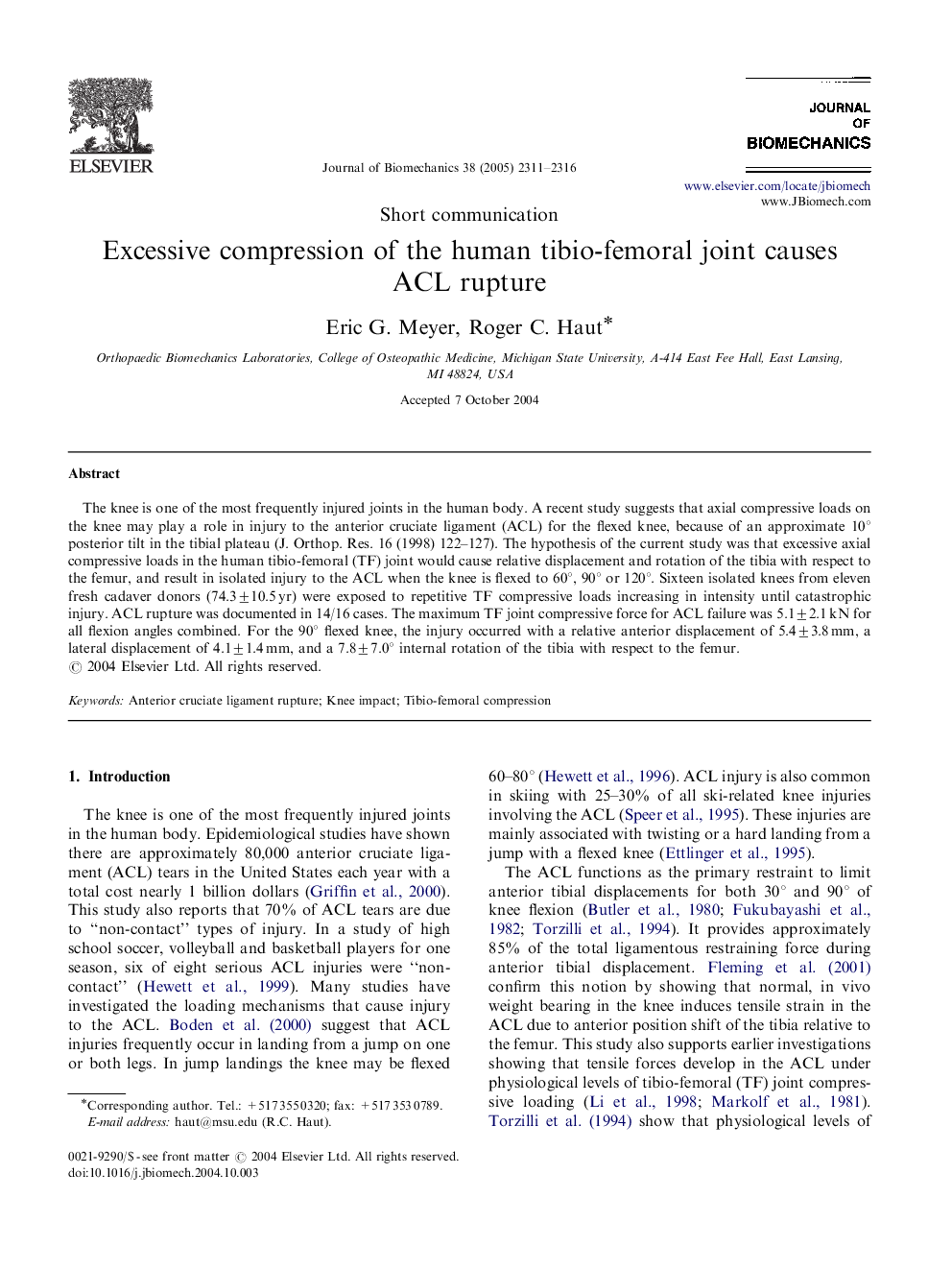| کد مقاله | کد نشریه | سال انتشار | مقاله انگلیسی | نسخه تمام متن |
|---|---|---|---|---|
| 875574 | 910405 | 2005 | 6 صفحه PDF | دانلود رایگان |

The knee is one of the most frequently injured joints in the human body. A recent study suggests that axial compressive loads on the knee may play a role in injury to the anterior cruciate ligament (ACL) for the flexed knee, because of an approximate 10° posterior tilt in the tibial plateau (J. Orthop. Res. 16 (1998) 122–127). The hypothesis of the current study was that excessive axial compressive loads in the human tibio-femoral (TF) joint would cause relative displacement and rotation of the tibia with respect to the femur, and result in isolated injury to the ACL when the knee is flexed to 60°, 90° or 120°. Sixteen isolated knees from eleven fresh cadaver donors (74.3±10.5 yr) were exposed to repetitive TF compressive loads increasing in intensity until catastrophic injury. ACL rupture was documented in 14/16 cases. The maximum TF joint compressive force for ACL failure was 5.1±2.1 kN for all flexion angles combined. For the 90° flexed knee, the injury occurred with a relative anterior displacement of 5.4±3.8 mm, a lateral displacement of 4.1±1.4 mm, and a 7.8±7.0° internal rotation of the tibia with respect to the femur.
Journal: Journal of Biomechanics - Volume 38, Issue 11, November 2005, Pages 2311–2316